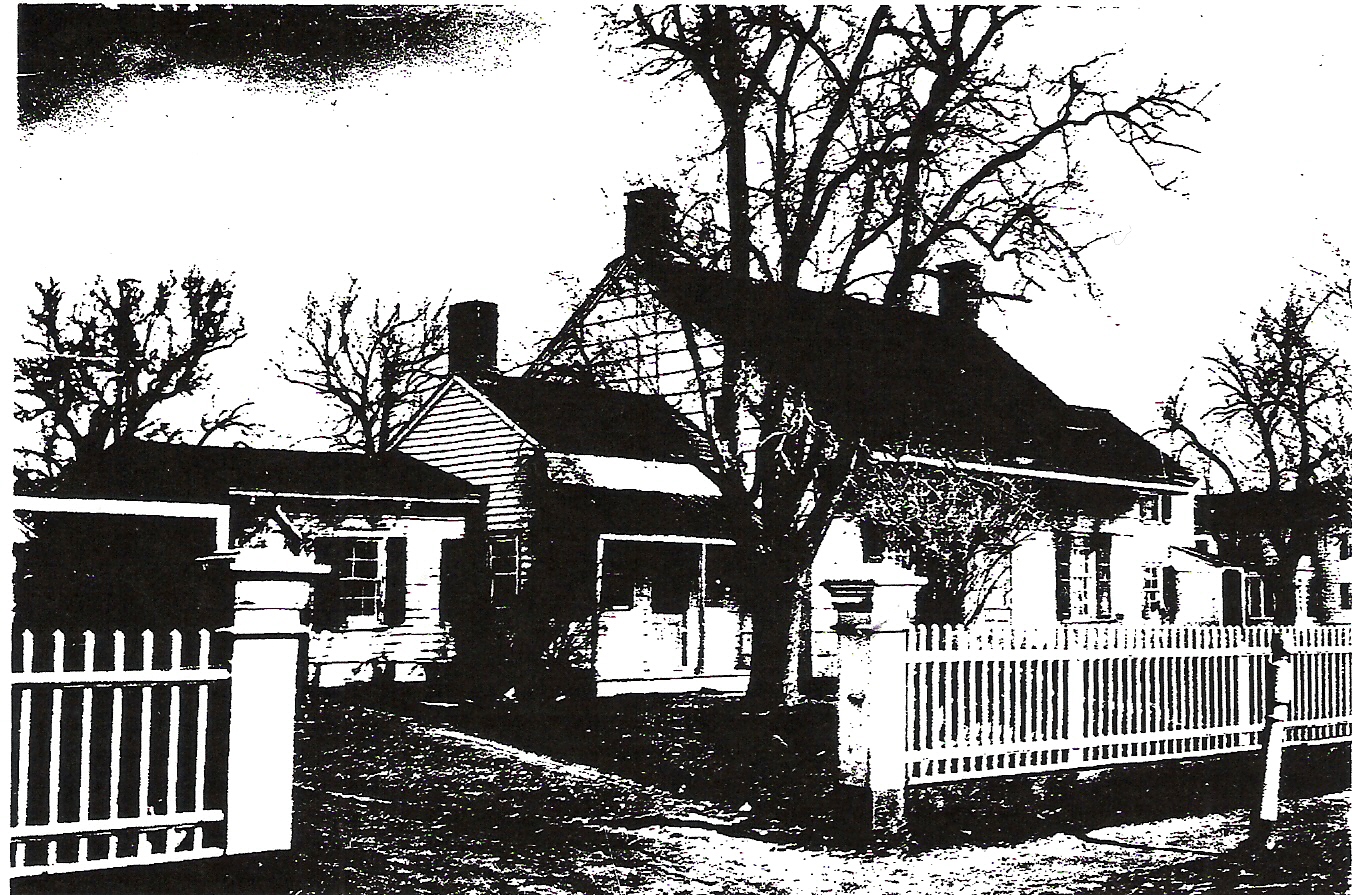 Erected about two hundred years ago.
Erected about two hundred years ago. Erected about two hundred years ago.
Erected about two hundred years ago.This house is now owned by Mr. George STILLWELL, of Gravesend, who has made a study of all that pertains to our local history. It was inherited by his wife, Jane E. VOORHEES, who was a daughter of Lucas J. and Gertrude (SUYDAM) VOORHEES. Lucas J. VOORHEES was born April 20th, 1809,* and died January 21st, 1879. He was married on December 17th, 1829, to his cousin Gertrude SUYDAM, who was born November 19th, 1808. She passed away May 15th, 1877. The father of Lucas J. was John S. VOORHEES. He was born October 8th, 1780, and died February 23rd, 1862. On August 26th, 1804, he married Adrianna VOORHEES, born August 22nd, 1787. She died June 2nd, 1854. Stephen J. VOORHEES was the father of John S., and he was born February 1789, and died about 1816. He married May 81st, 1767, Phebe RYDER, who was born January 22nd, 1749, and died March 25th, 1816. Stephen J. VOORHEES' name appears on the militia rolls of Gravesend of 1761. Of his children, -Jane, born April 4th, 1773; died September 17th, 1831; married April 4th, 1797, George SUYDAM, of Gravesend, and they were the parents of Gertrude, who married Lucas J. VOORHEES. An interesting story is told how John S. VOORHEES's father fought in the Battle of Long Island. The militia could not be compelled to leave the island, as their families and possessions were at stake. Some of them did, however, and among them was Stephen J . VOORHEES. He stayed with the Continental Army until the last. There is a tradition that a Hessian soldier was buried under the back parlor of this house. When the British were expected to land, General Washington ordered all the grain to be stacked in the fields for burning, and arrangements made for driving off and killing the cattle. I am told that for many years you could see, on a lonely road back of Gravesend, the bones of these cattle bleaching in the sun. When the officers whose duty it was to devastate the country came round, they allowed Mrs. VOORHEES to keep one of her cows, if she would hide it in a bedroom or cellar, because she had a young baby. This she did. In the melee of the Battle of Long Island her husband had become separated from his company and had worked his way home. A Hessian soldier entered the house in search of beef. He discovered the cow which was hidden to supply the baby with milk, and set about to carry it off, but in an altercation with the head of the house he was killed. They, according to tradition, buried him in the cellar so that his friends would not learn what had happened to him, and cause the family trouble. Mr. VOORHEES realized that it would be better for him to reach the American Army without delay, and he made his escape to them that night. To me this house is of particular interest, as it embodies a number of ideas which leads your compiler to believe it to be very old. The wing at the left of the picture is of quite recent date, and the other wings appear to have been added. The nearness to the ground is characteristic of the first part of the Eighteenth Century. I am of the opinion that it is about two hundred years old. If I am right it was erected by John COERTE VOORHEES and Seytie, his wife, who were the parents of Stephen J. VOORHEES. John COERTE VOORHEES was a son of Steven COERTE, who was the first VOORHEES in Gravesend, and who married Agatha JANSE, and died February 16th, 1723-4. He was a son of Koert STEVENSEN of Flatlands, who emigrated with his father in 1660. He was born in 1637, and married prior to 1664, Marretje Gerritse Van COUWENHOVEN. He held numerous offices both in church and state. In 1689 was Captain of militia. March 8th, 1691-2 he bought of John TILTON all his real estate in Gravesend. At one time, he signed his name Coert STEVENSE Van RUINEN. His father was the common ancestor of the VOORHEES family in America. He emigrated, in 1660, with his wife and seven children, from Ruinen, in Drenthe, Netherlands. He purchased land in Amersfoort and owned the house plot in Amersfoort, including the brewery with its apparatus, which he purchased of Cornelis Dircksen HOOGLAND on November 29th, 1660, with other lands, etc., for 3,000 guilders, a large sum at that time. This shows that some of the settlers brought money with them from Netherlands. This brewery was located near the Flatlands Church, and at the junction of Kings Highway, Mill Lane and the present Flatbush Avenue. * Lucas VOORHEES's name is written in the VOORHEES Genealogy as Lucas J. VOORHEES, while in some places in other books his name is written Lucas I. VOORHEES.
Back To Historic Homesteads Main Back To Town Main Return to BROOKLYN Info Main Page